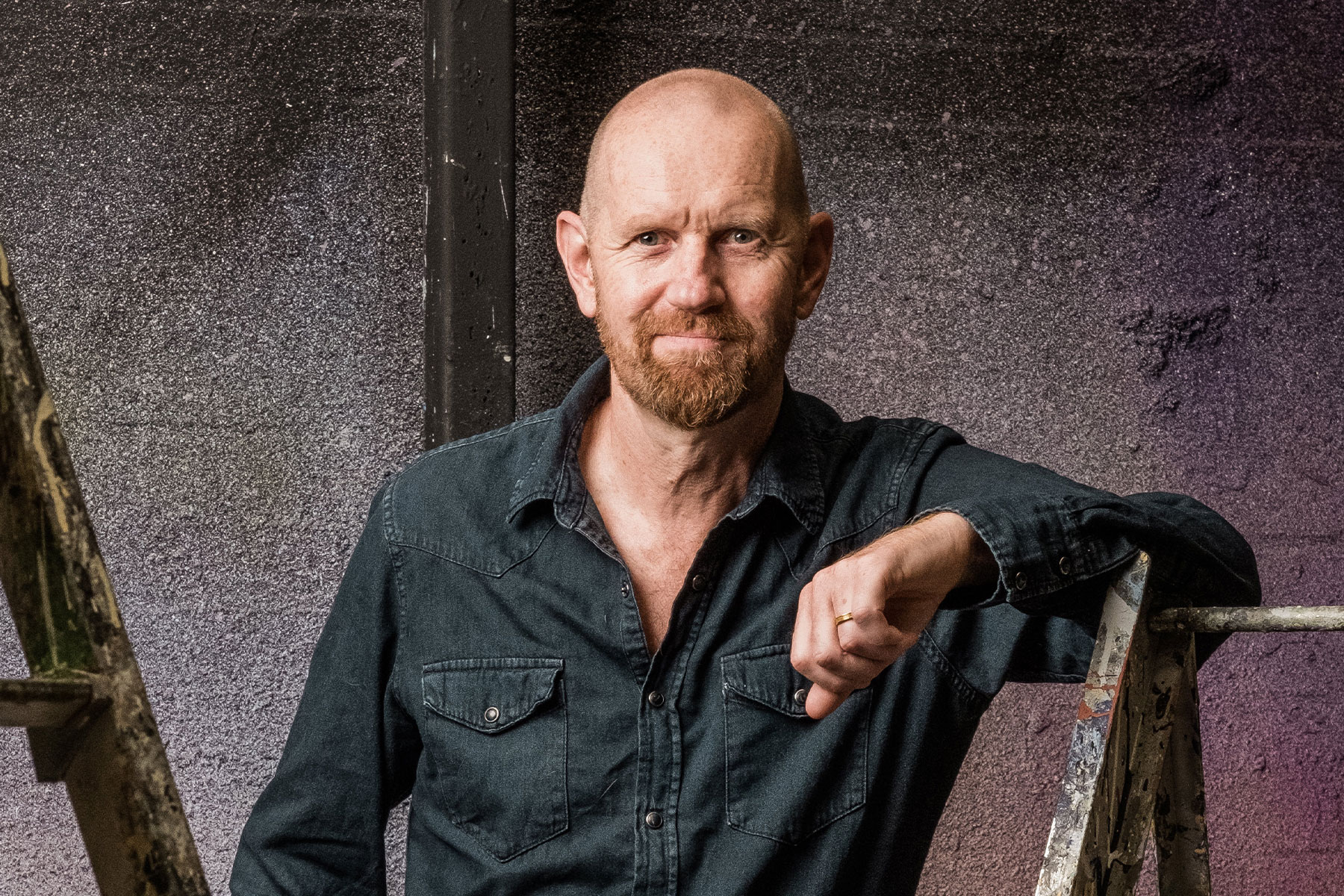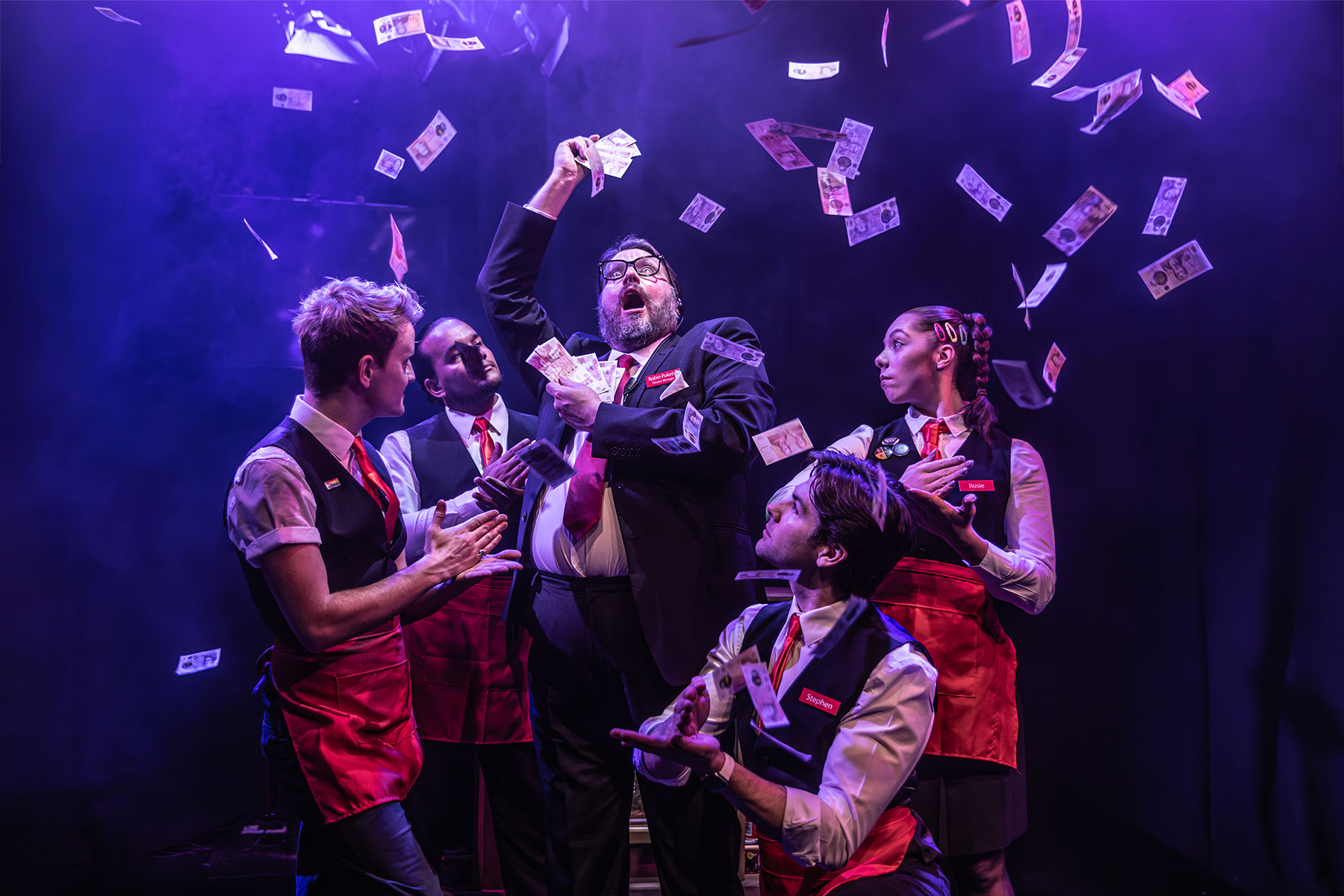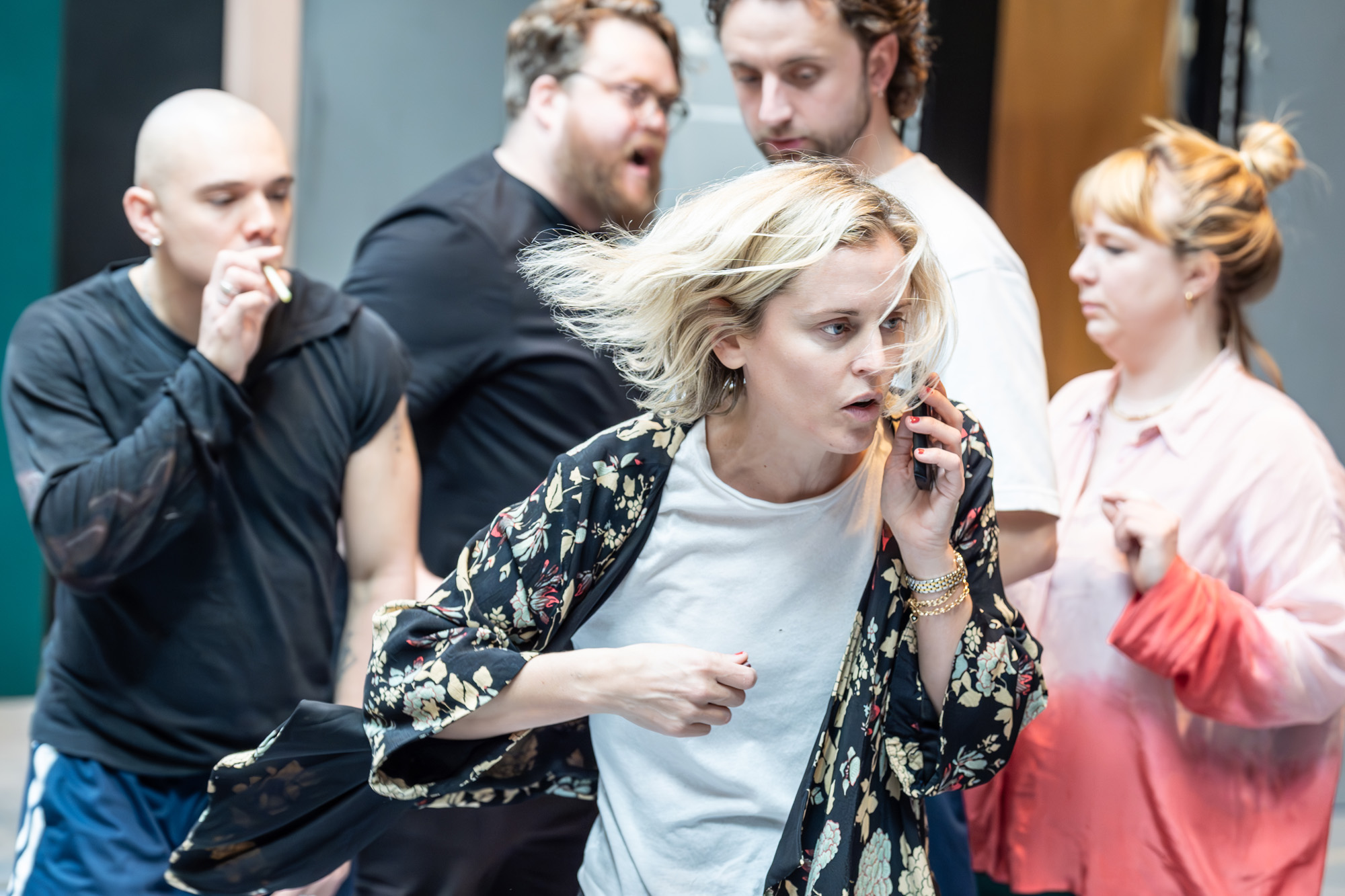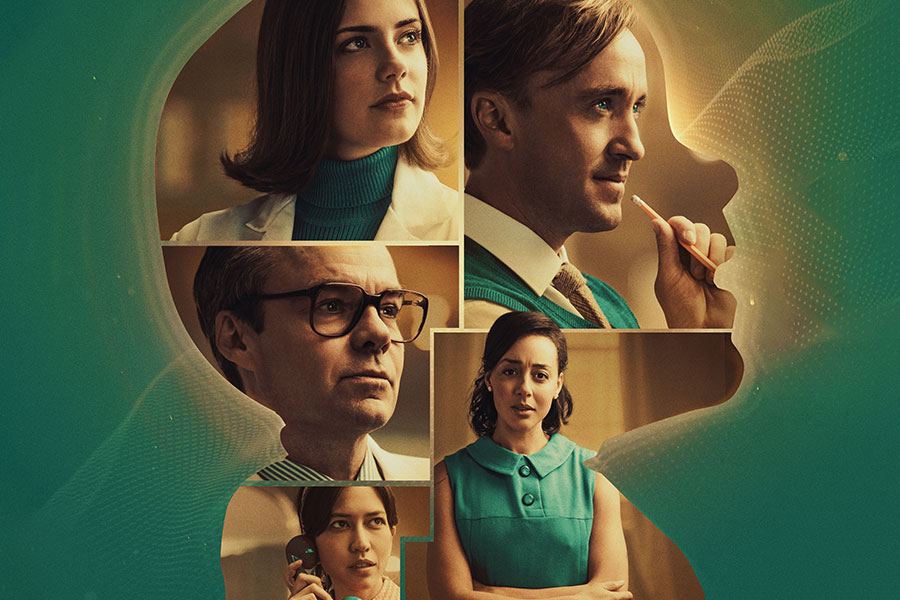WOS Radio: Creatives Redeem Shawshank Q&A
Theatregoers at our sold-out Whatsonstage.com Outing on Wednesday night (9 September 2009) to the premiere stage adaptation of The Shawshank Redemption were given extra insights into the development of the piece by co-adapter (and stand-up comic Dave Johns), director Peter Sheridan and star Reg E Cathy, who answered questions at our post-show Q&A.
American actors Kevin Anderson and Reg E Cathey lead the 20-strong cast as Andy Dufresne and Ellis Boyd “Red” Redding, two prison inmates who develop a life-long friendship after the former, a banker, is wrongly incarcerated for the murder of his wife. Cathey, who makes his London stage debut in the production, is a familiar face to TV fans from The Wire.
The The Shawshank Redemption Q&A took place in the theatre immediately after the performance and was chaired by Whatsonstage.com editorial director Terri Paddock. Click on the ‘play’ button above to listen to it in full. Edited transcript highlights follow …
On choosing to adapt The Shawshank Redemption
Dave Johns: Myself and Owen O’Neill, who are both stand-up comics, had done some shows up in Edinburgh like Twelve Angry Men, which was full of comedians and which was a hit that just went crazy. I think a lot of people thought that 12 stand-up comics would make a right hash of it, and yet we actually somehow pulled it off! Then we did One Flew Over the Cuckoo’s Nest in Edinburgh and then in the West End with [Christian Slater, and we were thinking of another show to do with comedians. We were sitting backstage having some tea and fig rolls, and Owen said “Why not The Shawshank Redemption?’” And we basically thought “Ok, that’s a good idea” and then “that’s crazy; that’s brilliant idea!”
We were surprised when we contacted Stephen King’s people that the rights for the novella, not for the movie, but for the novella, were available and so we went about trying to get it together. That was five years ago. It just took off straight away from sort of three years of doggedly trying to get it on and then suddenly when we met Breda Cashe and Pat Moylan (at Lane Productions) and they said they’d do it in May 2009, and we were like “oh right, now we have to write the script.”
On differences between the stage & screen versions
Dave Johns: We really didn’t want to just transfer the movie onto the stage; we wanted to try and make it a play and make it stand. Most people who know this will come for it because they know the movie. But we wanted to make sure we had written a play that would stand so that even if somebody who doesn’t know the movie will still understand it as a play.
Peter Sheridan: The stage play is fundamentally very different to the film, because obviously in the stage play, you’ve got to fill the space that we’re in with much more dialogue than you would in a film. So inevitably, the relationship between the two principals, Red and Andy, has to be much more substantial in the stage version. In the film, you can go from the jail to Andy’s eye, and suddenly you get that perspective, whereas in the theatre you’re always in the same spatial relationship to the performance, so the actors are required to bring a hell of a lot more of their psychic energy in order to translate it across the floor. So you have a different set of considerations to try and make the story work on a stage. The challenge is the thing that really energises me and gets me going is. How do you begin to cope with the challenge presented by something as complex as The Shawshank Redemption? You’ve got really complex elements within this story.
Dave Johns: We have to try to reinvent the iconic scenes and play around with ideas, and flesh out more of the characters, especially the other guys, to make it more interesting. At the start of the movie, Red says The first time I saw Andy Dufresne, I liked him.” You can’t have that in a play. You might as well just go home. You have to have some sort of tension.
Peter Sheridan: We didn’t have the scene where Stammas and Hadley come into the cell when the two guys are talking, and I felt we needed a scene that told us without telling us that Tommy was dead. In that scene, you know from Andy’s reaction to what Stammas is saying, Andy realised they’ve done Tommy in. I think that’s one of the wonderful things in theatre, when there’s a moment when the whole audience goes “shit!” in their head at the same time as the character on stage. And you just get that awful feeling of “oh no, don’t tell me they did that.” And then they did. That’s theatre. You can’t do that in film really, to the same way because it only happens when collectively, the audience holds their breath together.
On Red not being a red-headed Irish-American
Peter Sheridan: I was totally surprised to go back to the novella to discover that Red is a white guy with red hair; an Irish-American, hence the name ‘Red.’ It completely threw me, but I was thinking, because we’re doing the show in Ireland, surely we can go back to this guy being a white, Irish-American. And so for a long time I played around with the idea of taking the true story, and taking Andy, who’s a white guy, and a red-headed Irish-American guy, and trying to make it fit. And somehow, it didn’t fit in my head.
I now think that they made one of the most extraordinary casting decisions ever in the history of Hollywood when they cast Morgan Freeman in that film. Freeman was way down on their list when they offered it to him and he accepted the role. What happened, I believe, was a confluence of a number of things. The film came out about four years after Nelson Mandela’s release. It seemed to capture the spirit of a moment in history when a very important, iconic figure was released after a long, long time in jail. And he was a black man returning to South Africa to democratise the society that had been based on a paradigm and based on a minority rule.
So this fundamental thing that was happening in the world, The Shawshank Redemption tapped into that somehow. By making the relationship a relationship between a black man and a white man, it got down to levels that it was impossible to reach if Red had been a white person. When Red emerges from the prison, he becomes Mandela. He becomes black America. He becomes a representative of more than just himself, but of a whole society that was enslaved in the United States.
On following in Morgan Freeman’s footsteps
Reg E Cathey: You know, you can’t think about that. Morgan Freeman’s a great actor and he’s a wonderful man, and he’s one of the few heroes I have who hasn’t disappointed me. But if you approach it like that, you’re doomed. So immediately, I put him out of my head. Whenever people tell me I look like him, I just say thank you. I don’t try to do anything. I try not to think about him at all; except for he’s a great actor and a great guy …I thought this was a dream part to play. I’m honoured to be in the cast.
For information and booking links to future Whatsonstage.com Outings – including lots more exclusive post-show Q&As – click here.










